Physio Services
I Offer These Physio Services
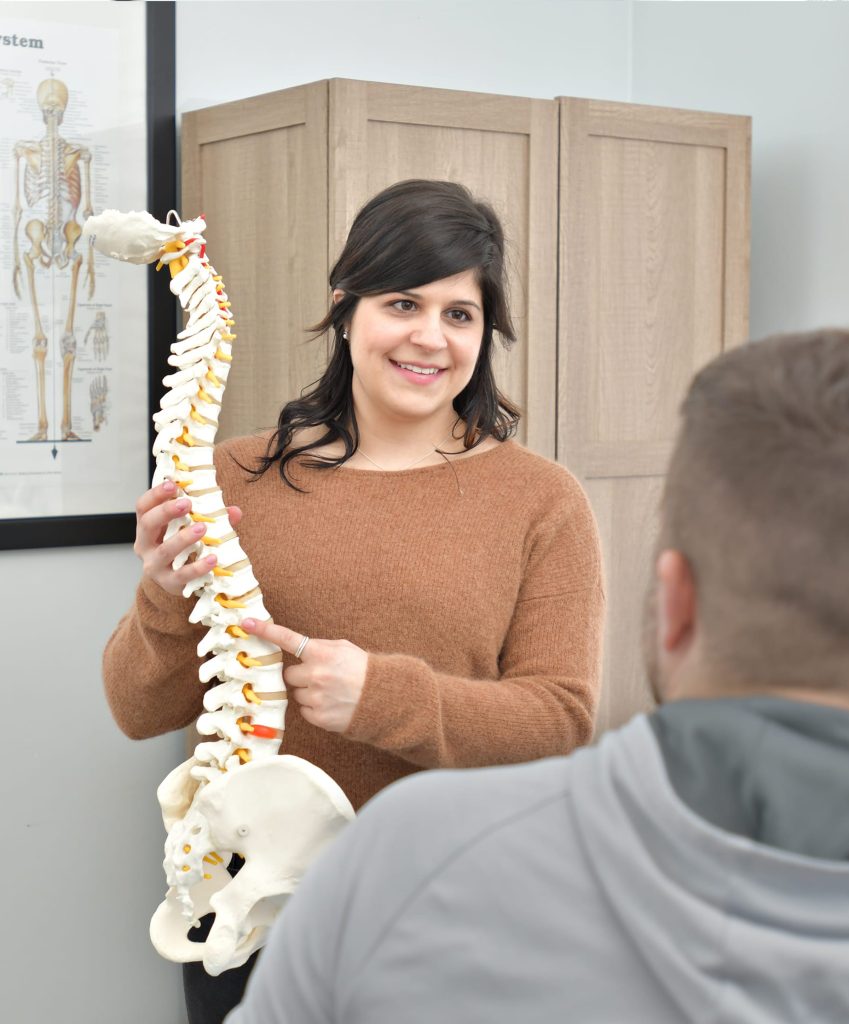
Assessment
We were trained in a variety of manual therapy approaches, including joint mobilization, myofascial release, active release technique, trigger point therapy just to name a few. These techniques are designed to address musculoskeletal imbalances, improve circulation, and promote natural healing processes.
Whether you’re recovering from an injury, managing chronic pain, or seeking to optimize athletic performance, my personalized sessions are tailored to meet your specific needs. We prioritize thorough assessments and individualized treatment plans to ensure you receive the highest standard of care.
Beyond treatment, we are committed to empowering you with a customized exercices plans, comprehensive advice and self-care strategies that complement your therapy sessions. Our goal is not only to relieve your symptoms but also to equip you with the tools for long-term health and prevention. The goal is to empower you with tools and knowledge to take control of your well-being.


Conditions treated:
- Sprains and strains
- Acute and chronic pain
- Back pain, Disc herniation & Degenerative disc disease (DDD), Sciatica, Spinal stenosis
- Neck pain, Whiplash, Headaches
- Spinal stenosis
- Sports injuries
- Pre & post surgical rehabilitation
- Postural problems, Scoliosis
- SIJ and pelvic dysfunction
- and many more…
Dry Needling
What is Functional Dry Needling?
Dry Needling is a common technique used to treat pain and movement issues. The technique involves insertion of a dry needle (with no injection of fluid) in a muscle or muscles in order to release shortened bands of muscles and decrease trigger point activity. When dry needling is applied to your muscles and tissues, it can decrease tightness, increase blood flow, and reduce local and referred pain.
Dry needling can be good for:
• Joint issues
• Tendinitis
• Migraine and tension-type headaches
• Spinal issues
• Whiplash
• Repetitive motion disorders
• Pelvic pain
• And many more….


Shockwave Therapy
What is shockwave therapy?
Extracorporeal Shockwave Therapy (ESWT) – more commonly known as shockwave therapy, is a non-surgical procedure used to treat chronic conditions of the musculoskeletal system. It promotes accelerated treatment of bone, soft tissue, tendons and joint injuries by utilizing mechanical energy to stimulate a change in the tissues. Shockwave therapy is a safe and effective treatment option.
What conditions can shockwave therapy treat?
• Achilles tendonitis
• Chronic neck or back dysfunction
• Hip pain
• Lateral and medial epicondylitis
• Patellar tendonitis
• Shoulder pain
• Plantar fasciitis
• And many more…
Graston Technique (GT)
Graston Technique (GT) therapy is successful in effectively treating all soft tissue conditions, whether they are chronic, acute, or post-surgical. This unique technique is a form of manual therapy that uses instruments enabling the treatment of scar tissue and fascial restrictions during the rehabilitation phase. This allows for faster recovery and greater success when the goal is restoring range of motion, eliminating pain, and restoring normal function.
What is Scar Tissue?
Scar tissue is a collection of cells and collagen that covers the site of the injury. People can develop scar tissue on their skin as the result of an injury and surgery. Scar tissue is a normal healing process as your body repairs damaged tissue. It can happen for both recent and older injuries. However, as you try to resume normal activities or return to more strenuous exercise, the scar tissue may limit your performance.
Indication for Graston technique
- Chronic and ongoing issues (fibromyalgia, myofascial pain syndrome)
- Scars post-surgery once healed and indicated (Total hip replacement, knee replacement, surgical incision/post-mastectomy or caesarean scarring)
- Neck pain, mid back or low back pain ( strain/ sprain)
- Lower extremities ( hip pain, ITB syndrome, patella femoral disorders, Achilles tendinitis pain, heel pain)
- Upper extremities ( Shoulder pain carpal tunnel syndrome, tennis elbow, golfer’s elbow, trigger finger
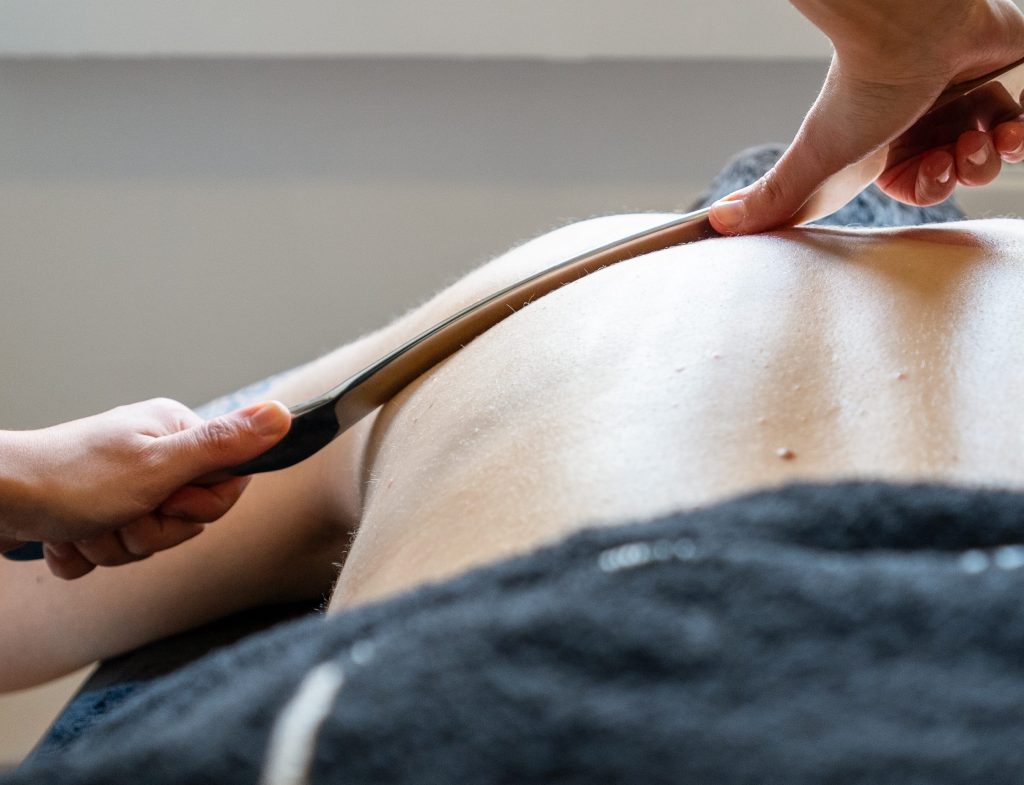
Perineal Rehabilitation
The physiotherapist can assess and treat various conditions that often involve the pelvis and pelvic floor muscles. The pelvic floor is the group of muscles extending from the front of the pelvis to the coccyx at the back of your body. They are responsible for supporting the low back, hip joints, and pelvic organs (bladder, uterus, and rectum). They play an important role in bladder and bowel function, sexual function, as well as pre and post-natal health.
Pelvic floor physiotherapy has demonstrated effectiveness in the treatment of many conditions, such as:
• Urinary or bowel incontinence
• Difficulty urinating
• Low back, hip or coccyx pain
• Constipation
• Pelvic organ prolapse including the bladder, uterus, and or rectum
• Pelvic pain disorders often diagnose by vaginismus, vulvodynia, dyspareunia
• Pre-natal & postpartum pelvic pain or care/ prevention
• Prostate problems and erectile dysfunctions
• Gender affirming surgeries, back surgeries, cancer treatments

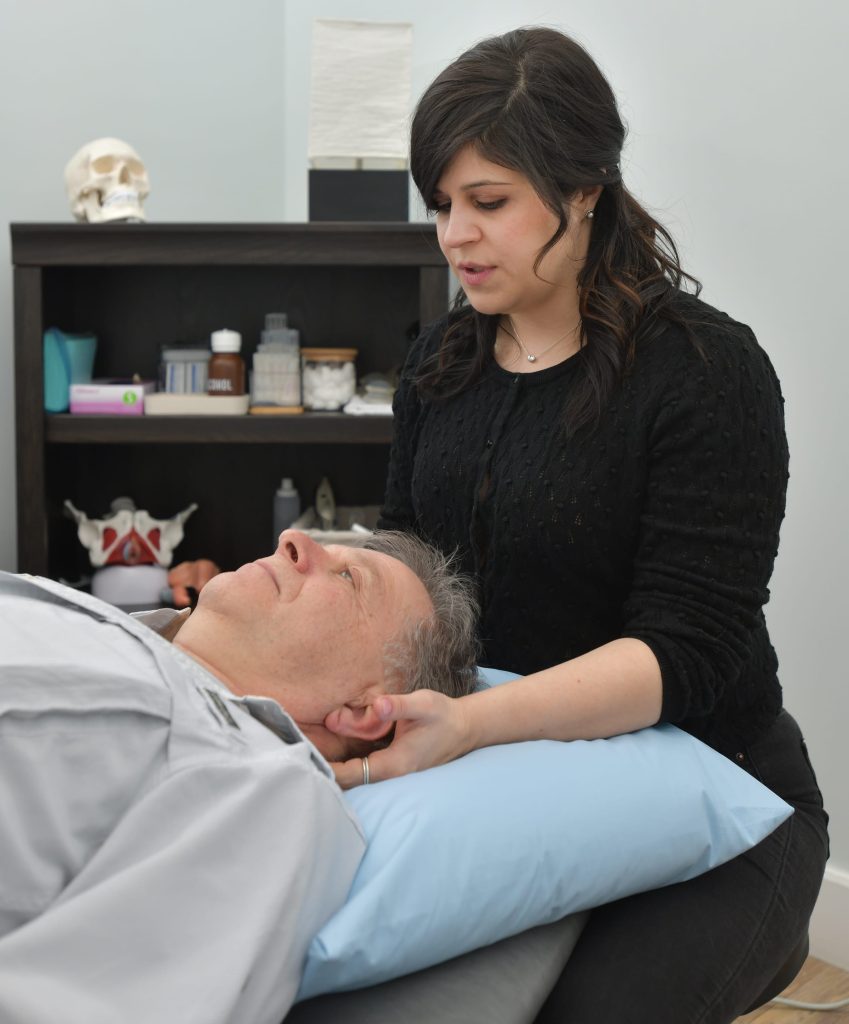
Vestibular Rehabilitation Therapy
Vestibular Rehabilitation Therapy, also known as VRT – treats the symptoms that patients may have with vertigo, dizziness and balance disorders. Treatment may simply involve specific positioning maneuvers to position crystals in the inner ear or you may require a series of exercises such as habituation, gaze stabilization, or balance training.
The main objective of vestibular rehabilitation is to help speed up the body’s compensation process that takes place once the vestibular system has changed.
What can we treat?
Conditions that can be aided with vestibular rehabilitation include:
• Benign Paroxysmal Positional Vertigo (BPPV)
• Ménière’s Disease
• Labyrinthitis
• Vestibular Neuritis
• Cervicogenic Dizziness
• Ischaemic vertigo
• Vestibular migraine
TMJ
The temporomandibular joint – also known as TMJ connects the lower jaw (mandible) to the temporal bone in the skull. It is a blanket term to describe pain and dysfunction of the joint that connects your lower jaw to the temporal bone on each side of the face and the muscles that move the jaw. TMJ dysfunctions are commonly caused by a misalignment of teeth, arthritis, gum chewing, teeth grinding or jaw injury.
The physiotherapist will use a combination of techniques to relax, release, and stretch tight muscles and scar tissue. This can help reduce the pain and discomfort of both chronic and acute TMD and get the temporomandibular joint (TMJ) moving properly again.
What Are some Symptoms of TMJ?
TMJ symptoms can be mild or quite severe. They can progress to the point that patients have a difficult time eating solid food.
Here are some common symptoms:
• Pain in the TMJ joint
• Popping or clicking
• Locking of the jaw in an open position or closed position
• Muscle spasm at the angle of their jaw and on the side of their head
• Headaches
• Dizziness
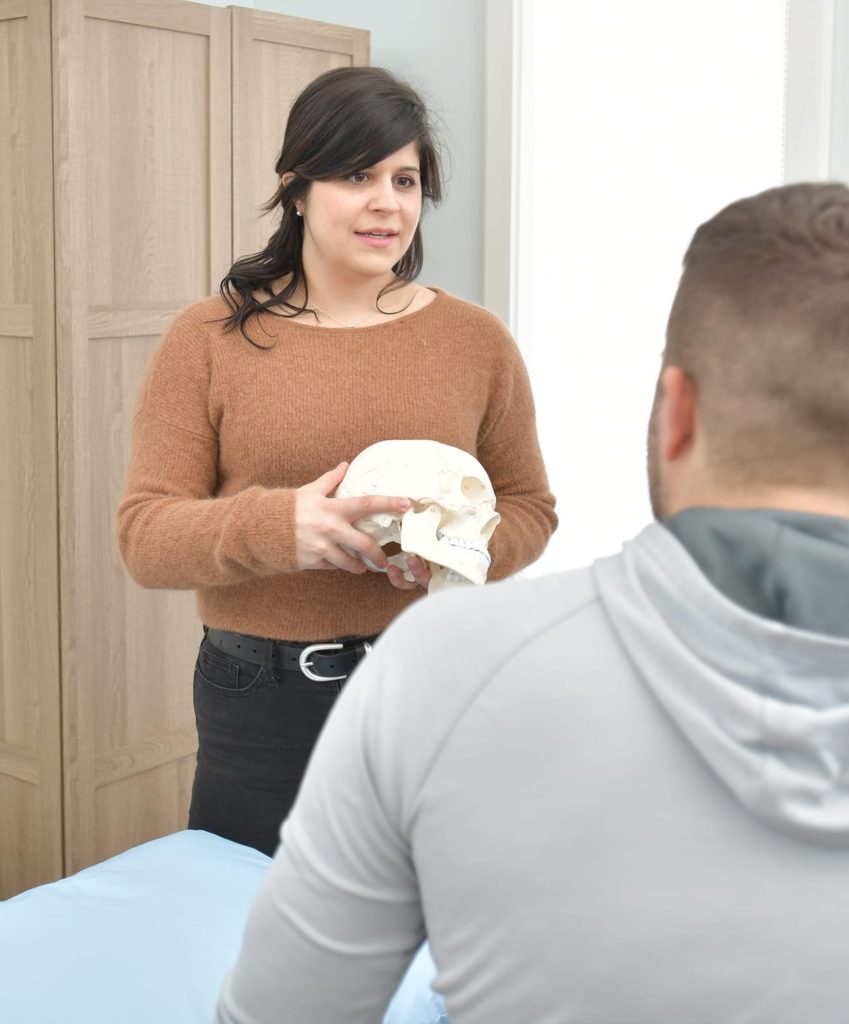
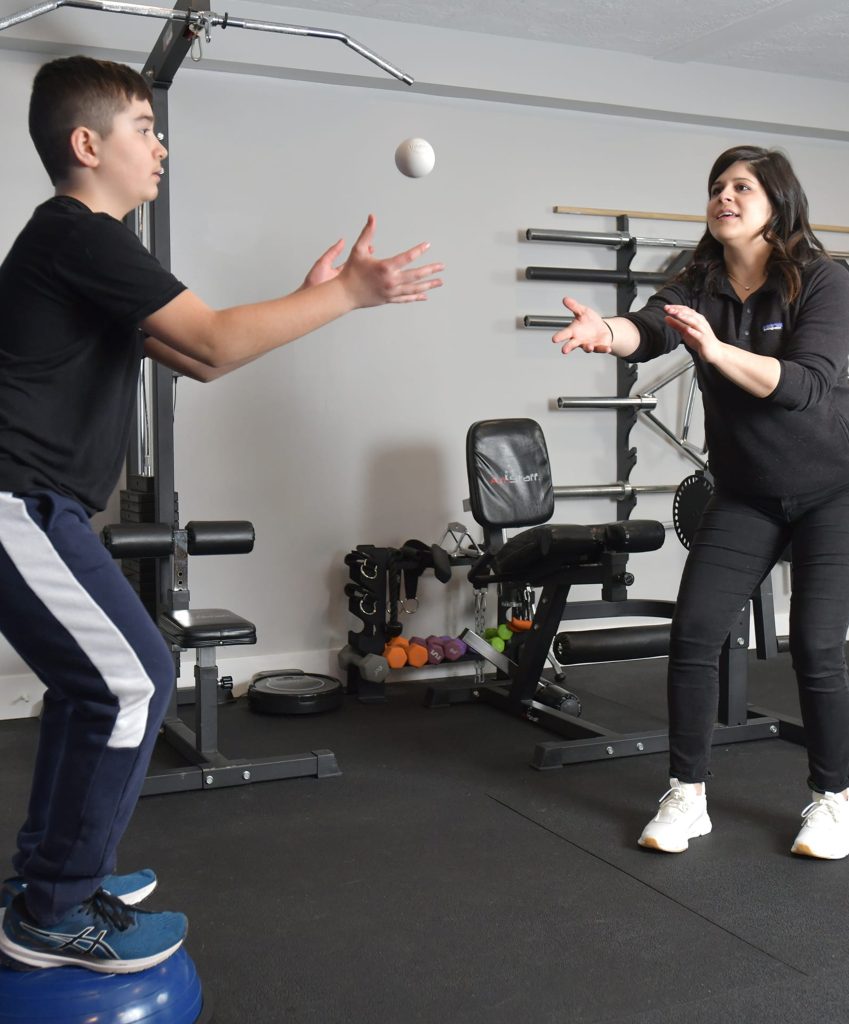
Concussion Management
Concussion Management, also known as CRT is a form of physiotherapy that uses a science-based treatment protocol to address the symptoms of a concussion and post-concussion syndrome. Through a series of tests, the physiotherapist will determine what combination of exercises and therapies would be best for your case. Here are some treatment options that have shown benefits to patients in the past.
• Retraining the inner ear balance system called the vestibular system.
• Manual Therapy on the neck to help with headaches.
• Exercises that train your visual system.
• Cardiovascular exercises.
• Exercises that focus deep muscles in the neck.
• Education about the return to activity.
What is a Concussion?
A concussion is a mild traumatic brain injury caused by a strong impact to the head or neck, or elsewhere in the body where high pressures are transmitted to the head.
Here are some common symptoms after a concussion:
- · Headaches
- · Dizziness
- · Nausea
- · Vomiting
- · Blurry vision
- · Slurred speech
- · Exercise intolerance
- · Light sensitivity
- · Fatigue
- · Noise sensitivity
- · Brain fog
- · Anxiety/depression
- · Inability to multi-task
- · Cognitive changes
- · Trouble paying attention
- · Terrible balance
- · Poor memory
- · Can’t tolerate screens
- · Trouble reading
